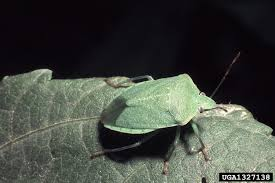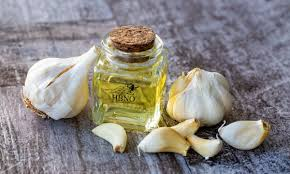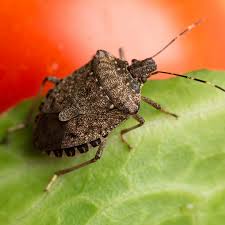Stink bugs, including over 200 species found in North America, are notorious for their shield-like shape and the unpleasant odor they emit when disturbed or squished. The smell, often compared to skunk or cilantro, can be off-putting, especially when they invade gardens or homes.
These pests feast on a variety of fruits and vegetables, including cucumbers, tomatoes, apples, and peaches, making them a threat to gardeners. If you’re struggling with stink bugs, here are effective methods to control and remove them from your garden and home.
1. Keep Your Garden Clean
The first line of defense is cleanliness. Stink bugs love to hide in decaying plant matter and debris, so clearing dead leaves, weeds, and overgrown plants from your garden can reduce their hiding spots. Regularly maintaining your garden will make it less inviting for stink bugs to settle and breed.
2. Use Safer Organic Controls
Some plants naturally repel stink bugs. Consider adding aromatic plants such as garlic, catnip, lavender, thyme, radishes, and marigolds to your garden. These plants can help deter stink bugs with their strong smells.
Additionally, certain plants attract predators that can help control stink bug populations. For example, French marigolds, buckwheat, and purple tansy attract parasitic wasps, which lay their eggs in stink bug eggs, destroying them before they hatch. Birds such as cardinals, bluebirds, and wrens also love munching on stink bugs, so attracting these birds to your garden can further reduce pest numbers.

Another strategy is to plant sacrificial “trap plants” like sunflowers or tomatoes away from your main crops. These plants draw stink bugs, allowing you to remove and dispose of them without affecting your primary garden.
3. Traps and Pheromones
Trapping stink bugs can also be effective. A simple DIY trap involves hanging a light above a pan filled with soapy water. Stink bugs are attracted to the light, fall into the water, and drown.
Commercially available pheromone traps emit scents that attract stink bugs. However, many gardeners report mixed results, so they may not always be the most reliable option.
4. Organic Pesticides and Repellents
If natural methods aren’t enough, organic pesticides and repellents can help. One effective option is garlic spray. Simply chop five or six garlic cloves, boil them in a gallon of water, strain the mixture, and spray it on your plants. Neem oil is another organic solution that can repel stink bugs.
Insecticidal soap can also be effective, particularly for soft-bodied insects, though some gardeners find success using it on stink bugs. You can buy commercial insecticidal soap or make your own by mixing five tablespoons of liquid soap with one gallon of water. Additionally, pyrethrin, a natural insecticide, can target stink bugs, though it’s toxic to some beneficial insects, so use with caution.

5. Chemical Controls
When organic methods fall short, chemical treatments such as Sevin insecticide are an option. However, it’s important to note that Sevin can be harmful to humans and beneficial insects like bees and ladybugs. Always follow label instructions carefully and wash any produce treated with this pesticide thoroughly.
6. Get Ready for Battle
Stink bugs may be persistent, but you have a variety of tools to combat them. From attracting natural predators to using organic sprays or chemical treatments, there’s no shortage of strategies to protect your garden. With these methods, you can prevent stink bugs from wreaking havoc on your crops, ensuring a healthier, more enjoyable gardening experience.
Remember, gardening itself is a great stress reliever—so don’t let these pests take the fun out of it! Whether you opt for natural repellents or more aggressive pest control methods, it’s time to defend your plants and restore peace to your garden.
